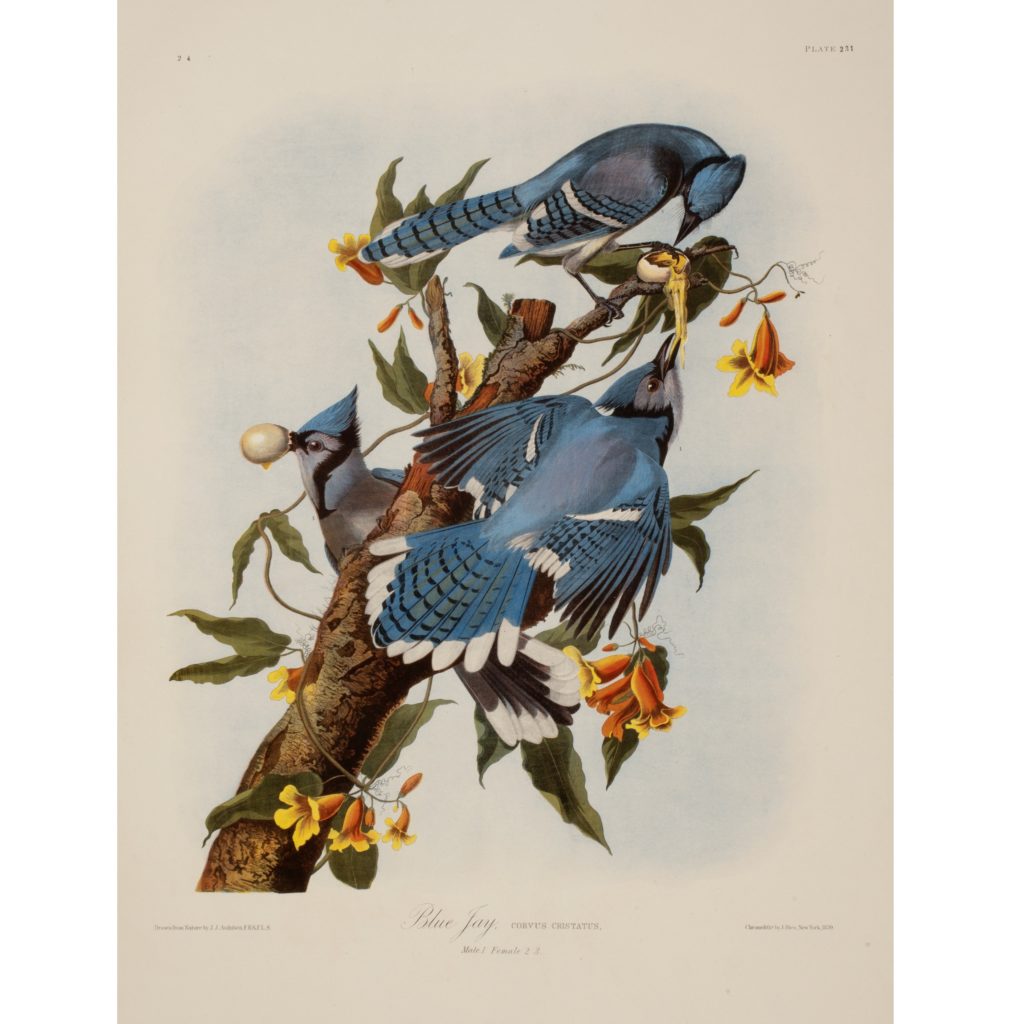
In 1858, John Woodhouse Audubon, son of John James Audubon, set out to recreate the success of his father’s work Birds of America, published in 1838 with four hundred large, hand-colored engravings. John Woodhouse partnered with lithographer Julius Bien and the publishing firm of Roe, Lockwood & Company to create a less-expensive set than the Lizars/Havell edition. (The story of how AAS missed out on the 1838 plates was told in a previous blog post.) John Woodhouse Audubon solicited subscribers for the $500 set, costing half the price of the 1838 set. Since the Audubon family still owned the copper plates used in 1838, they were given to Bien to transfer to lithographic stone. Each plate still required at least six color stones, making the project expensive and cumbersome. The timing of the project was unfortunate as well. America was on the brink of the Civil War, and by the time the first volume came out in 1860, subscribers had started to back out of the project, and others, especially in the South, were unreachable. Only 15 parts of the anticipated 45 were produced, and most were bound in a large, one-volume set, containing 150 images on 105 sheets. Because of the small number produced (an estimated 75–100), this “Bien edition” of Birds of America is considered rarer than the 1838 edition. It is estimated that today, only seventeen bound sets still exist.


In 2012, AAS was given a copy of this extremely rare bound edition of Bien’s Birds of America. Longtime lithograph collector Jay T. Last generously donated his copy to the library in honor of the retirement of curator emerita Georgia B. Barnhill. The large, heavy volume requires a custom-built cradle to be viewed and two people to transport it. Because of this, the entire volume was digitized and described, and is now available to view as an illustrated inventory using the Omeka platform. The site is keyword-searchable, and tags make it easy to find like birds, as well as other documented items in the plates such as nests and landscapes. The resources page links to other related items in the AAS collections, including a salesman’s sample for the 1870 octavo volumes that accompany the plates. Enjoy!
